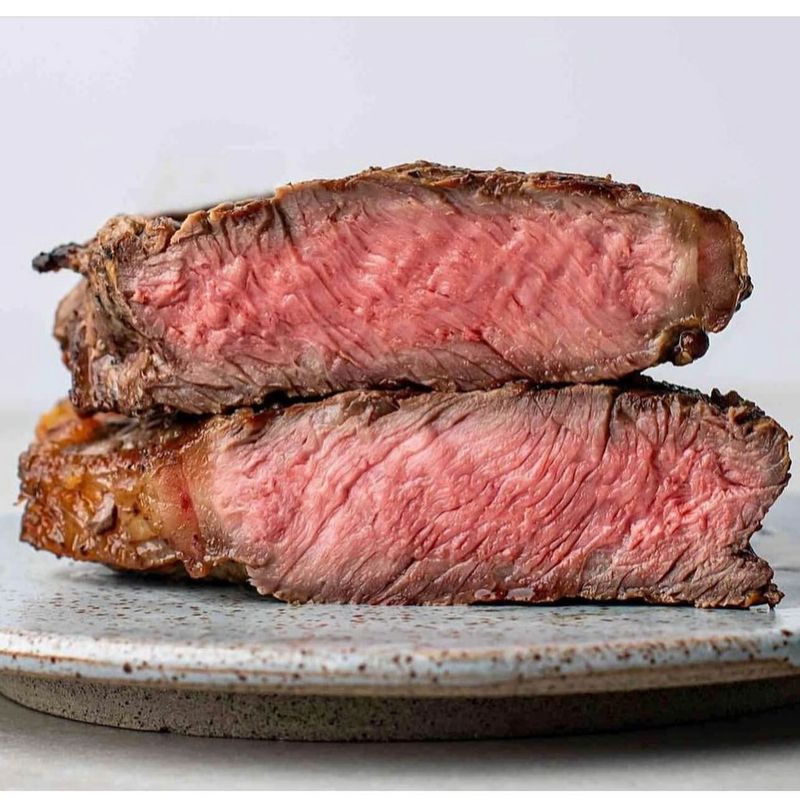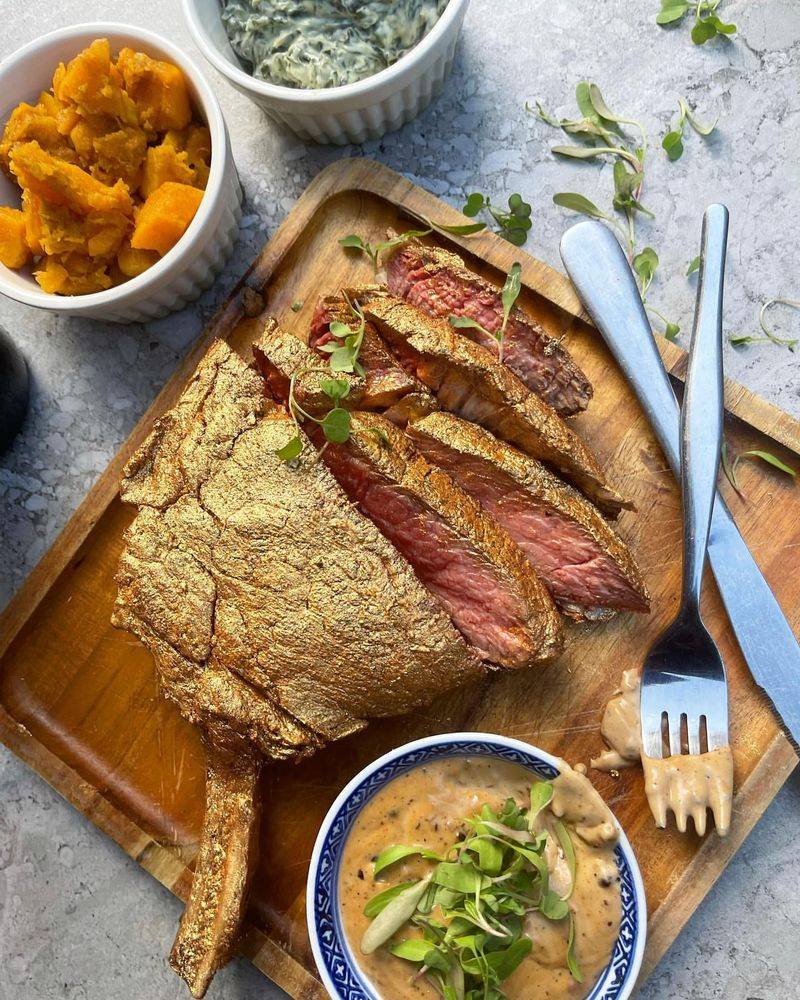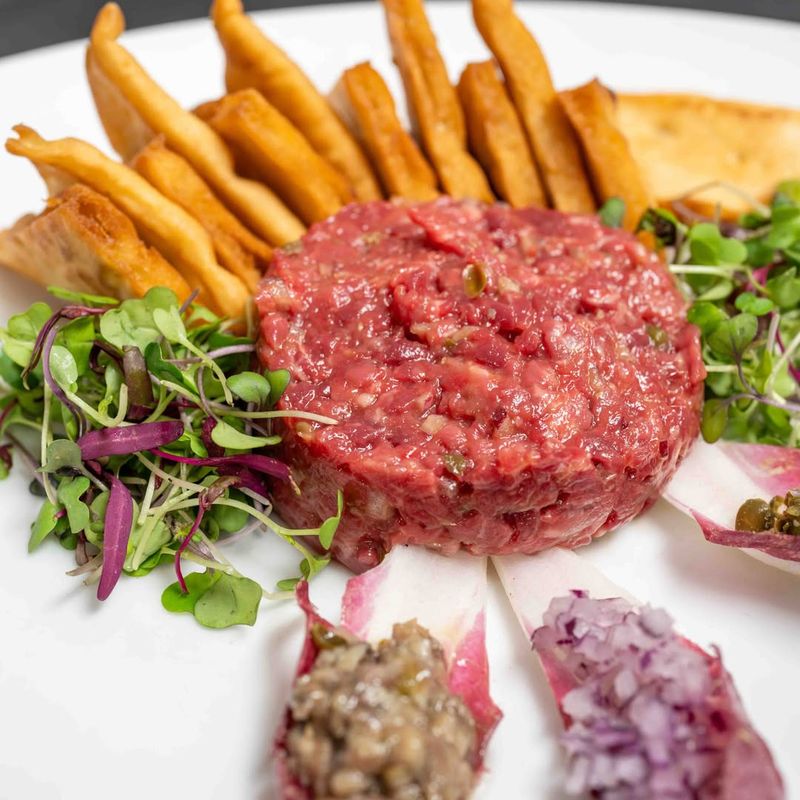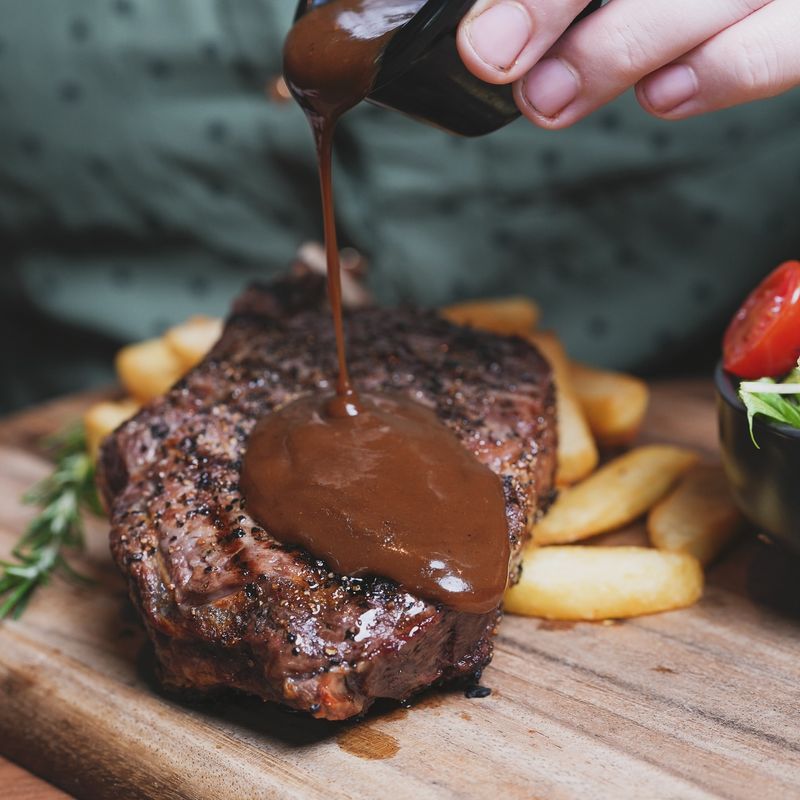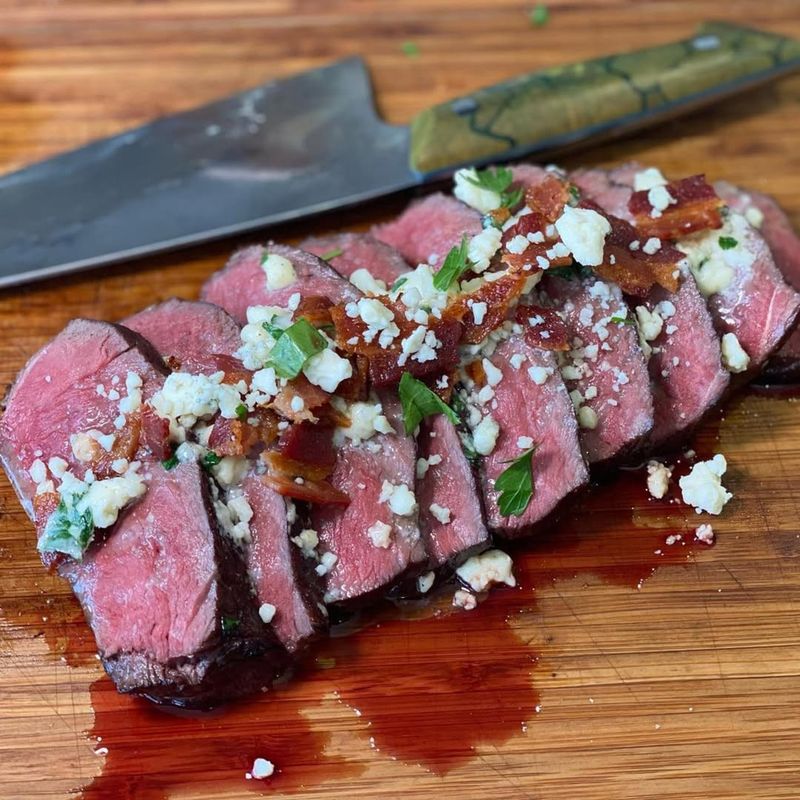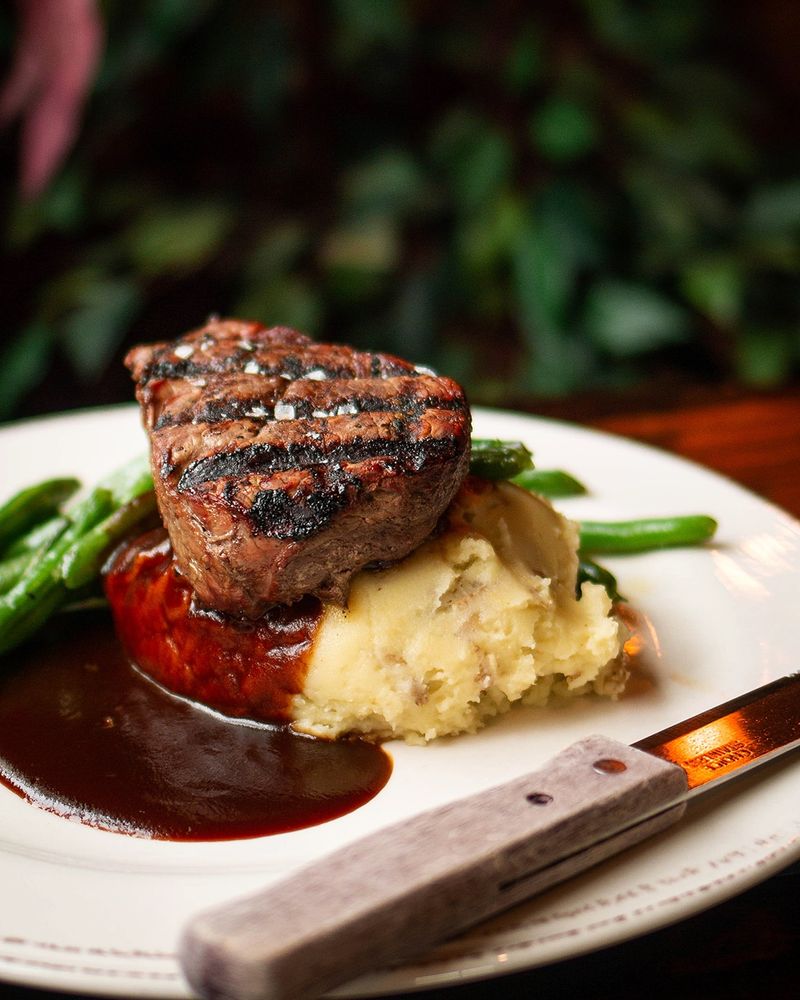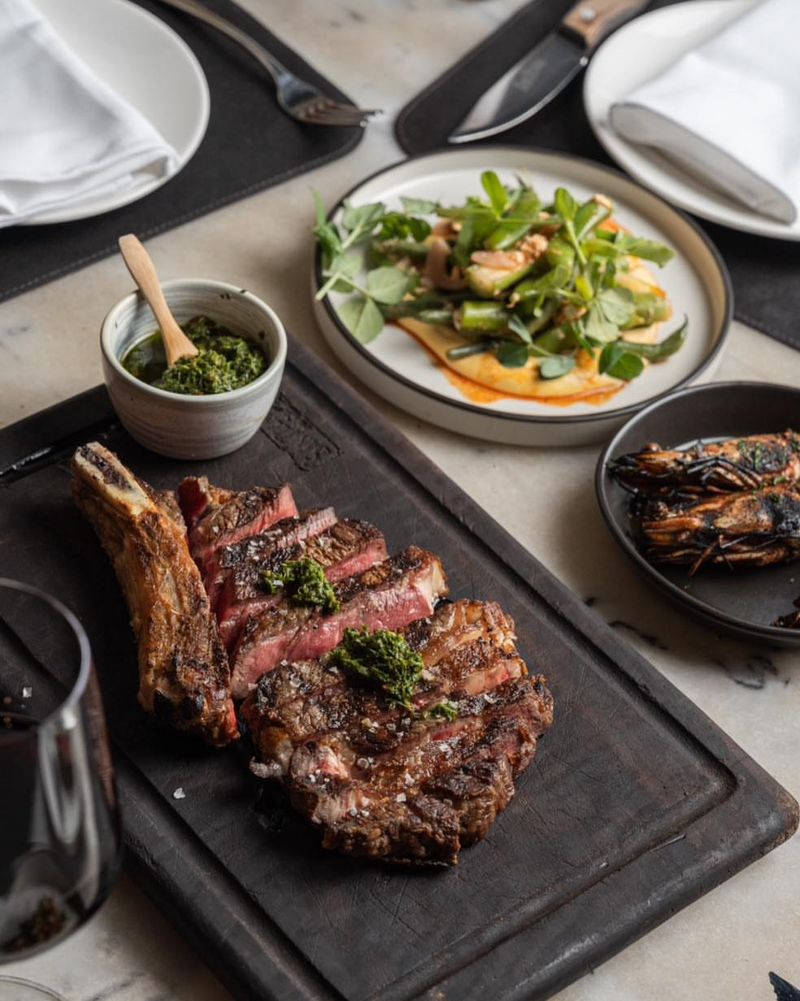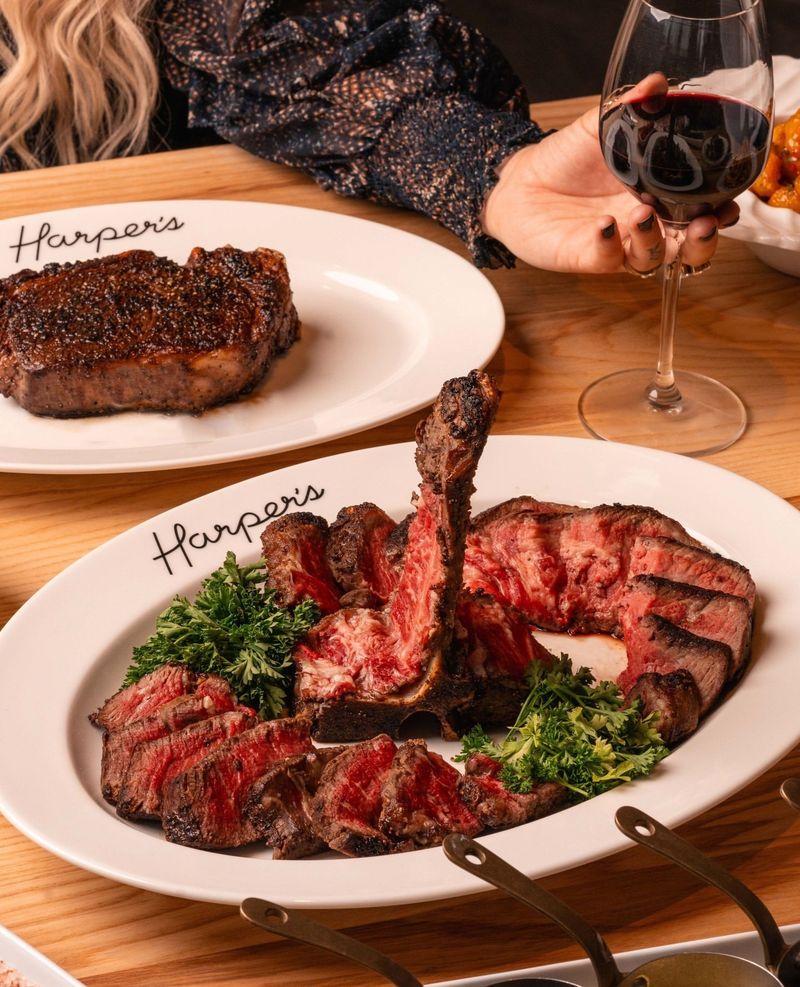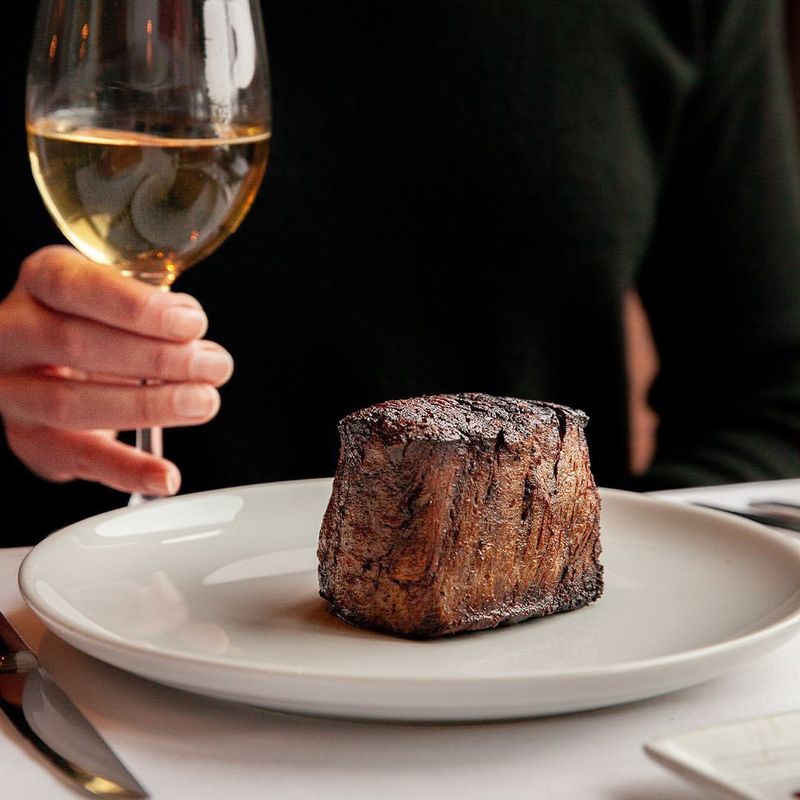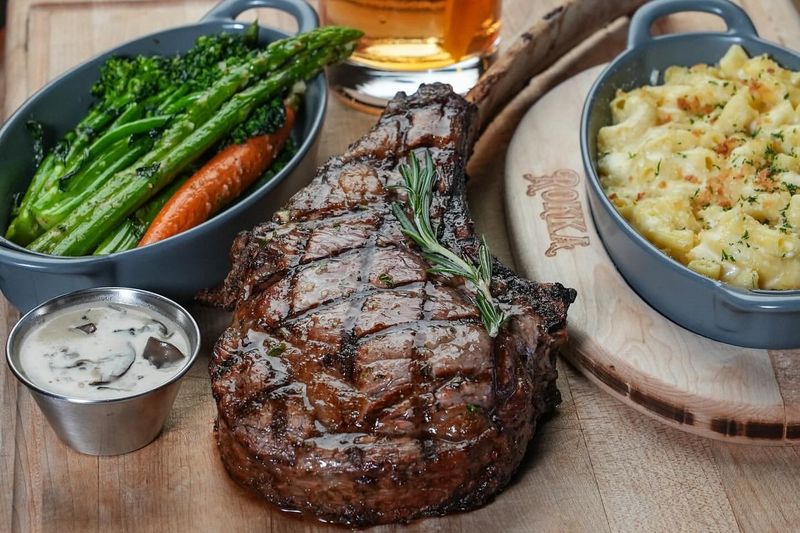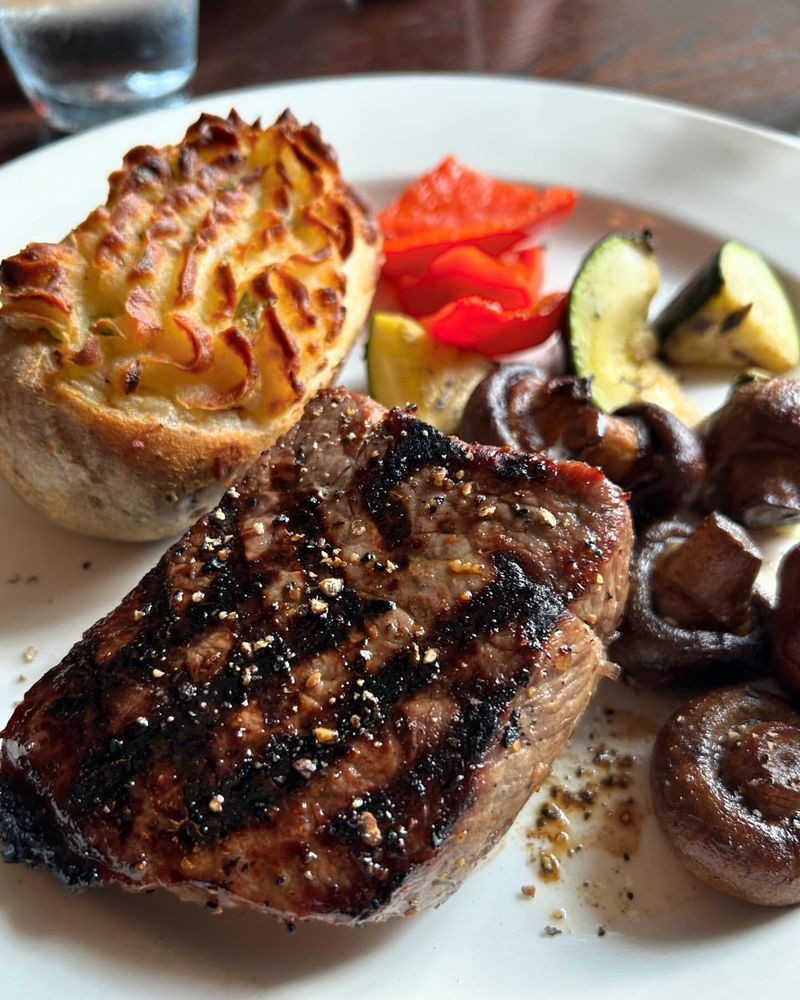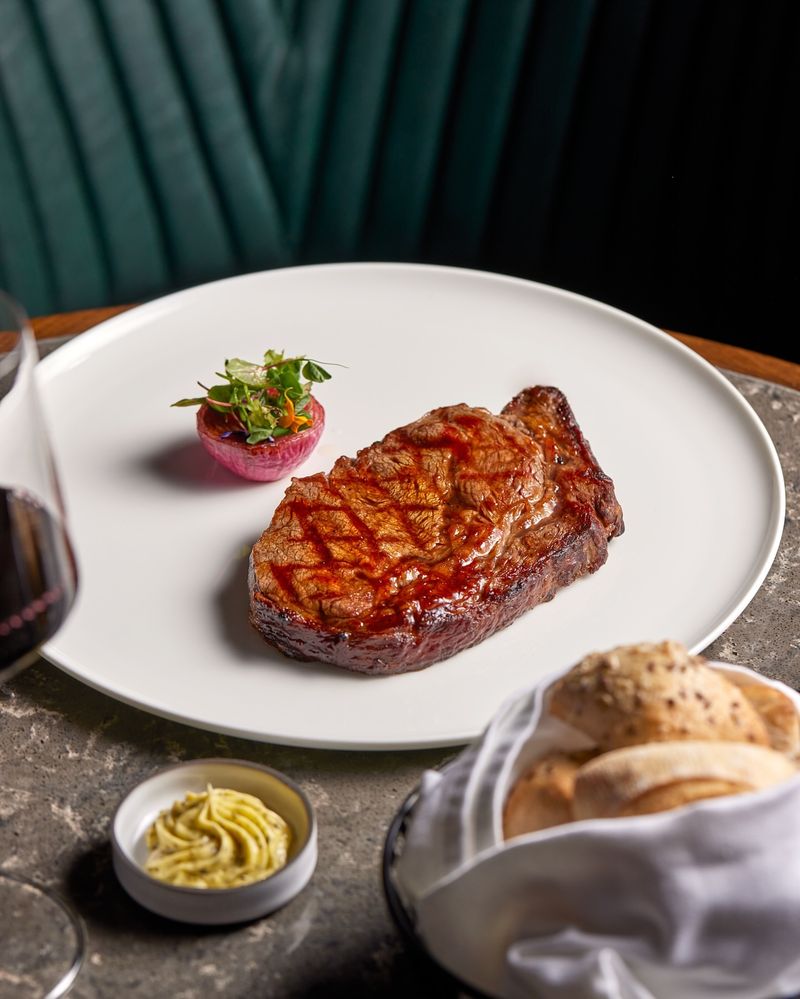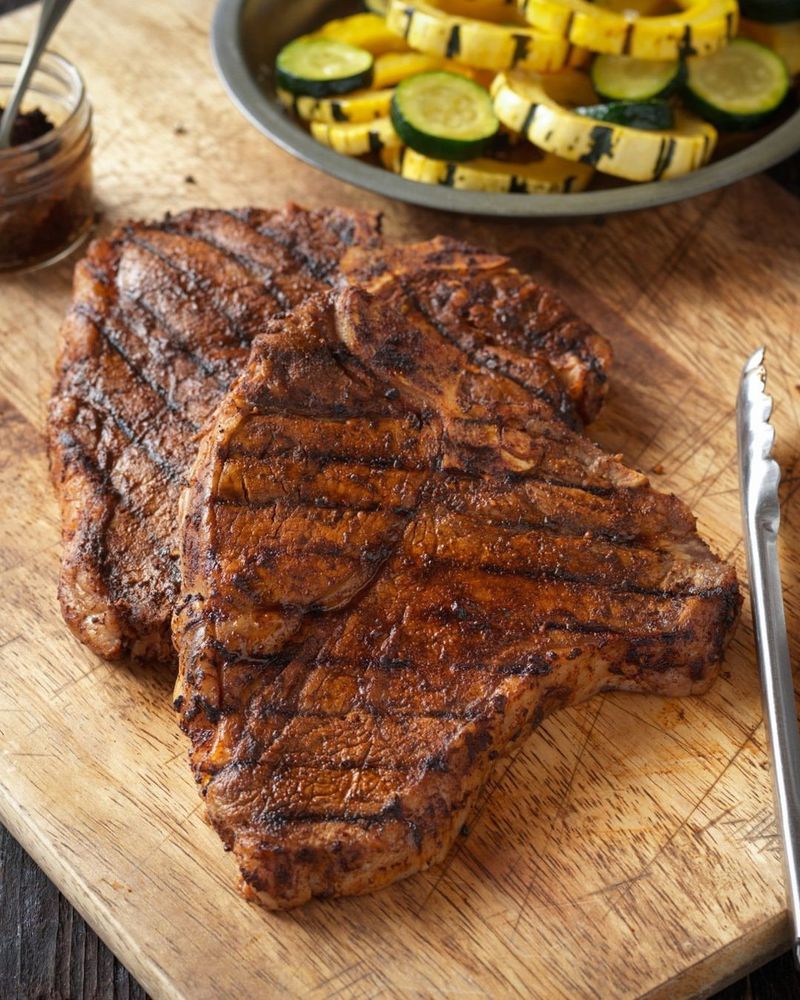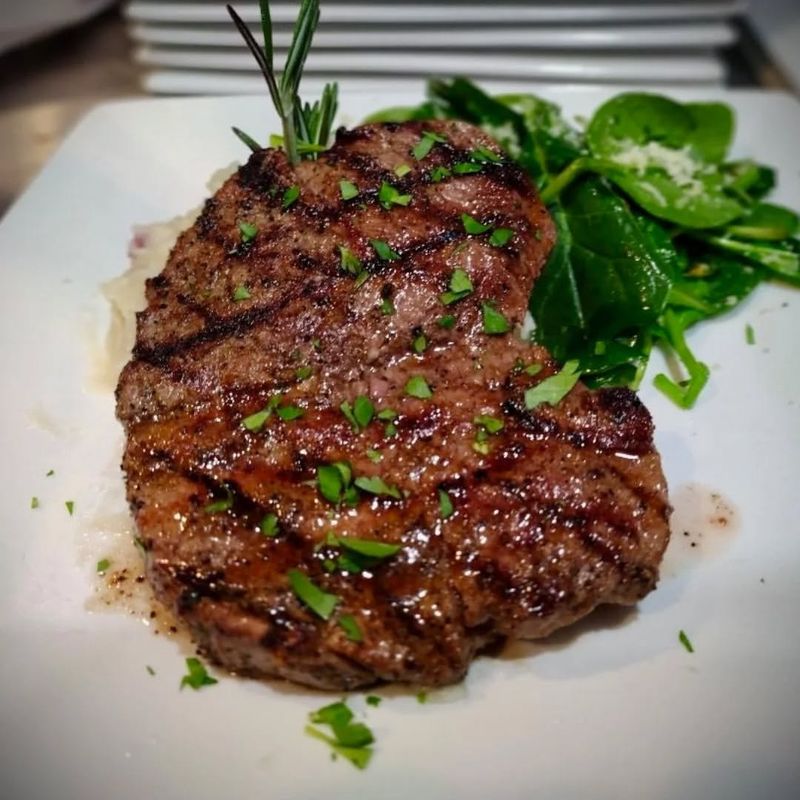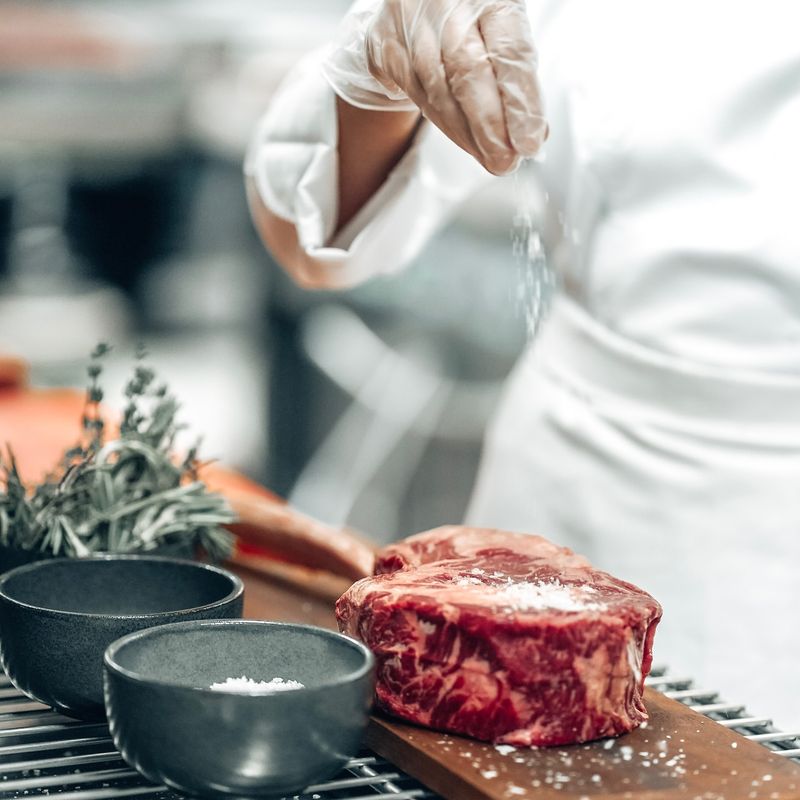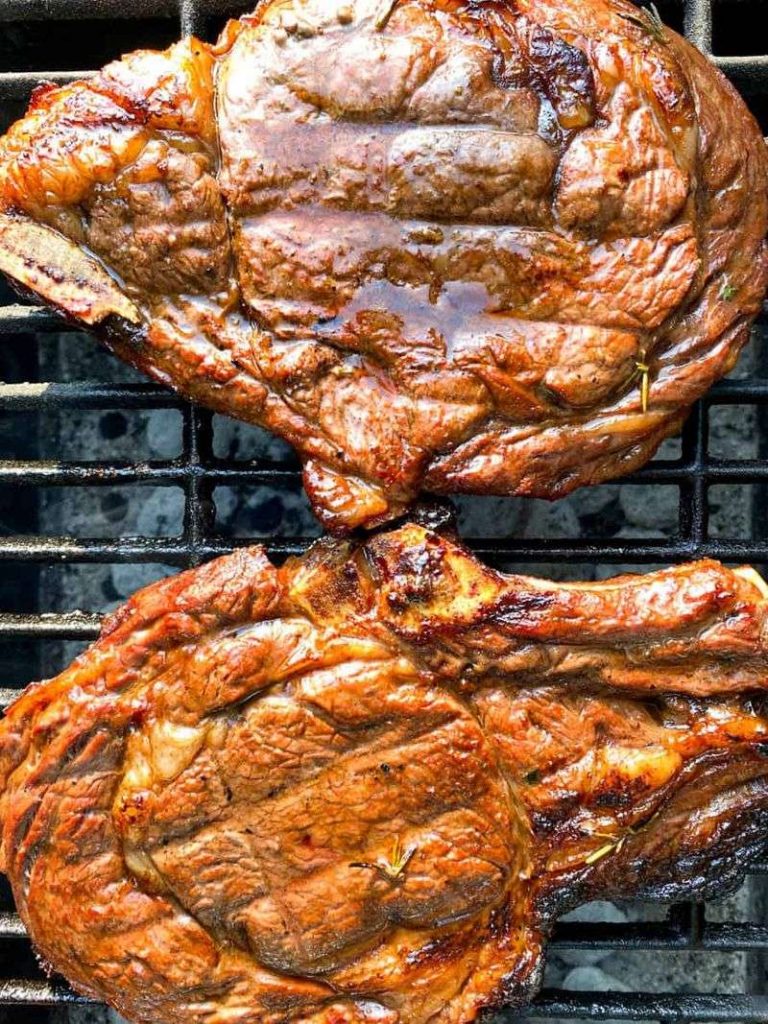Ordering a steak seems simple—until you accidentally insult the kitchen, embarrass your date, or commit a culinary crime that gets you side-eyed for life.
Whether you’re at a Michelin-starred temple of beef or your local chop house, these 22 cringe-worthy steak-ordering mistakes will instantly reveal you as an amateur.
1. I’d Like My Steak Done Medium Plus
When ordering steak, avoid asking for a ‘medium plus’ doneness level. Steakhouses typically adhere to standard doneness levels like rare, medium, and well-done. Making up a level can confuse both your server and the chef.
If you’re unsure about what to request, clarify whether you prefer a pink center or something more cooked. This way, you’ll likely receive a steak cooked to your liking without having to invent terms that might not be understood.
2. What Steaks Are Trending Right Now?
Trendy steaks might sound appealing, but ordering them might come off as a bit odd to your server. Not all steakhouses follow trends, focusing instead on quality cuts they know well.
If you’re curious about the most popular options, ask about the house specials or customer favorites. This way, you can enjoy a renowned steak without seeming overly fixated on fleeting trends. Always remember, classic steaks earned their fame for a reason.
3. I’d Like The Steak Tartare Well Done
Though it might seem amusing, requesting steak tartare well-done is a contradiction. Tartare is traditionally served raw, highlighting its delicate flavors and textures. If raw isn’t your preference, explore other options on the menu.
The variety in a steakhouse means there’s something for everyone. Thus, you can savor a dish cooked to your liking while respecting the essence of each culinary creation. Knowing what dishes entail can avoid awkward situations.
4. I’ll Need Lots Of A.1. Sauce With My Steak
Asking for A.1. sauce might suggest that the steak lacks flavor, which might not be the case. Good steak is seasoned and cooked to highlight its natural taste. If you’re used to adding sauces, consider tasting the steak first to appreciate its original flavors.
However, if you still wish for sauce, request it discreetly to avoid offending the chef. By doing so, you show appreciation for the culinary effort put into your meal.
5. Can You Heat Up The Blue Steak?
Blue steak, seared on the outside and raw inside, should be enjoyed as served. Asking for additional heat changes its intended experience.
If you’re uncomfortable with the rawness, opt for a different doneness like rare or medium-rare. This ensures you enjoy the meal as intended by the chef. Considering your preferences and the chef’s expertise leads to a harmonious and satisfying dining experience.
Remember, understanding the menu can enhance your meal.
6. I’ll Take The Filet, But With Just A Few Changes
Modifying a steak dish extensively can disrupt its crafted balance. Chefs design dishes to highlight specific flavors and textures. Rather than altering, trust the chef’s expertise and enjoy the filet as it comes.
If dietary needs arise, mention them clearly so the kitchen can accommodate appropriately. Hence, you enjoy a delicious meal without unnecessary complications.
Learning to appreciate the chef’s vision can lead to delightful surprises on your plate.
7. And Make It Quick
Rushing a steak order can impact its quality. Steaks require precise cooking time to achieve desired doneness. If in a hurry, consider ordering something that cooks faster or visiting when you have more leisure.
Patience ensures a delicious steak cooked to perfection. How you manage time can significantly affect your dining satisfaction. Planning your visit allows the kitchen to deliver their best work, providing a memorable culinary experience.
8. What’s Your Daily-Special Steak Today?
While some restaurants offer daily specials, not all steakhouses follow this practice. Asking might lead to confusion if none exist. To discover unique options, inquire about chef recommendations or signature dishes.
This approach reveals the restaurant’s standout offerings without assuming non-existent specials. Therefore, you get to enjoy the chef’s best creations. Exploring the menu with an open mind can uncover hidden gems that might become your new favorites.
9. Bring Me A Salt Shaker
Requesting a salt shaker before tasting might suggest the steak is under-seasoned. Chefs season steaks carefully to enhance natural flavors.
Taste the steak first to assess its seasoning. If it truly requires more, request salt discreetly. This shows respect for the chef’s work and the dish’s integrity. Understanding when and how to adjust seasoning can elevate your dining experience.
Appreciating the chef’s seasoning choices can lead to a more enjoyable meal.
10. I’d Never Drink White Wine With Steak
Traditionally, red wine pairs with steak, but dismissing white entirely limits your experience. Some white wines complement certain steaks, offering unique flavor profiles. Consider experimenting with pairings to discover personal preferences.
Being open to new suggestions can enhance your culinary journey. Hence, you might find a surprising match that delights your palate. Remember, dining is an adventure, and trying unexpected combinations can lead to delightful discoveries.
11. Your Biggest Tomahawk Steak, Please
Ordering the largest cut might seem impressive, but ensure it’s manageable. Tomahawk steaks are substantial, and finishing one requires a hearty appetite. Assess your hunger and consider sharing if necessary. This ensures satisfaction without waste.
Recognizing portion sizes and your appetite leads to a balanced meal. Enjoying a steak doesn’t mean overindulging; it’s about savoring quality. Therefore, choosing wisely enhances both your dining experience and appreciation of the meal.
12. Can You Make It Well Done?
Requesting a well-done steak might seem harmless, but to many chefs, it’s akin to sacrilege. This cut of meat, meant to be tender and juicy, can lose its character if over-cooked. Overheating tends to strip the steak of its natural flavors and texture.
Rather than demanding a well-done steak, consider opting for medium or medium-well to preserve some of its juiciness. You might find this balance enhances your overall enjoyment.
13. Is This Steak Grass-Fed?
Inquiring about the steak’s sourcing is wise but should be done politely. Not all servers might know such specifics immediately. If grass-fed is essential, ask gently and patiently. The staff will likely find the answer for you.
Understanding beef sourcing can enhance your appreciation of the meal. Hence, expressing interest respectfully facilitates informative responses. Being informed about food origins contributes positively to your dining narrative and experience.
14. Can I Have A Vegetarian Option Instead?
Steakhouses specialize in meat dishes, so asking for vegetarian options might puzzle the staff. However, many places do offer sides or salads that could make a satisfying meal.
If vegetarian options are vital, research the menu in advance. This way, you can ensure a fulfilling dining experience. Understanding a restaurant’s focus helps set realistic expectations.
Thus, you can enjoy your meal without disappointment by preparing accordingly. Communication is key in dining satisfaction.
15. I’ll Have My Steak Without Any Fat
Requesting a completely fat-free steak overlooks the role fat plays in flavor and tenderness. Fat enhances taste, keeping the meat juicy. If leaner cuts are preferred, choose options like filet mignon. This balances personal taste with culinary tradition.
Understanding the role of fat in steak enhances appreciation. Hence, selecting the right cut aligns with both preference and steakhouse offerings. Enjoying steak means embracing its natural qualities for the best experience.
16. Can You Butterfly the Steak?
Butterflying a steak, while not uncommon, may be seen as undermining the chef’s intent. This technique can result in uneven cooking and risk drying out the meat, especially in finer dining establishments where precision is key.
If increase in tenderness is your goal, consider choosing a cut naturally high in marbling instead. This allows for a juicy, tender experience without altering the chef’s presentation.
17. Does The Chef Know How To Cook Steak?
Questioning the chef’s abilities might come across as disrespectful. Chefs in steakhouses are skilled in preparing meats to perfection. If worried about doneness, communicate preferences clearly instead. Trust the process and expertise of the kitchen to deliver.
Confidence in the chef allows for a more relaxed dining experience. How you phrase requests impacts the ambiance and service received. Opt for respectful inquiries to foster a positive interaction and memorable meal.
18. Can I Have Extra Grill Marks?
Requesting extra grill marks might seem like a fun idea, but it can place unnecessary emphasis on appearance over flavor. Grill marks, while visually appealing, do not enhance the taste or texture of the steak.
Instead of focusing on aesthetics, consider the flavor profile and preparation method. This change in perspective can lead to a more fulfilling meal.
19. Is Your Beef From Local Farms?
Inquiring about local sourcing reflects concern for quality and sustainability. While not all steakhouses use local beef, many are transparent about sourcing. Ask with genuine interest to learn more. Awareness of beef origins can add depth to your dining experience.
Thus, showing care for sourcing enriches the conversation. Engaging in such discussions promotes an understanding of food systems. Dining becomes not just about taste, but also about connection and community.
20. Can I Have A Tofurkey Steak?
Requesting a tofurkey steak in a traditional steakhouse may provoke amusement. Steakhouses focus on beef and other meats, rarely offering vegetarian alternatives.
If seeking plant-based options, verify the menu beforehand. This ensures the venue aligns with your dietary preferences.
Understanding a restaurant’s specialties avoids misunderstandings. Consequently, choosing the right dining spot enhances the entire experience. Enjoying a meal is about harmony between expectations and offerings available.
21. Is This Steak Gluten-Free?
Imagine sitting in a top-notch steakhouse, surrounded by the rich aroma of sizzling meats. You ask, “Is this steak gluten-free?” The waiter blinks, unsure how to respond. Steak, consisting solely of meat, is inherently free from gluten. Requesting information on gluten content in steak might cause unnecessary confusion.
While concerns about gluten are valid in many dishes, it generally doesn’t apply to a cut of beef. Be mindful of sides or sauces instead, which may contain gluten.
Asking about gluten in steak can divert attention from more pertinent dining questions, like the steak’s provenance or preparation.
22. Can I Get A Vegan Steak Option?
Picture this: a bustling steakhouse, known for its legendary cuts. You suddenly ask, “Can I get a vegan steak option?” Nearby diners chuckle, and the waiter raises an eyebrow. Steakhouses specialize in premium meat dishes, and such a request might seem out of place.
Vegan options may exist, but branding them as ‘steak’ could mislead or confuse. Seek plant-based dishes that align with the restaurant’s offerings instead.
Asking for vegan steak in a steakhouse can create awkwardness, diverting from the main event—the exquisite flavors of their traditional steaks.


